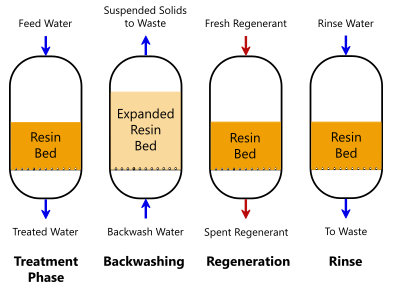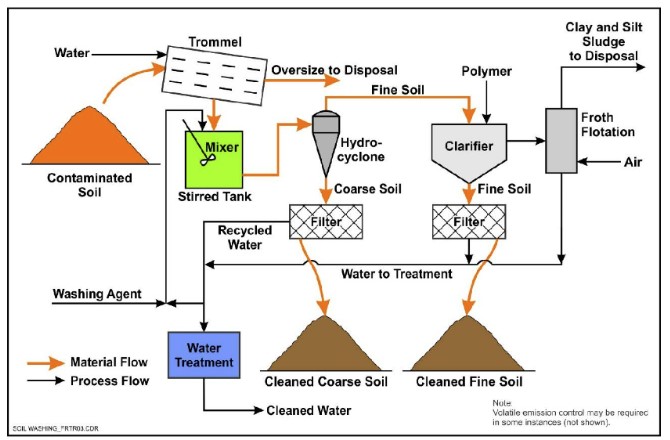How M270 Waste Management Help in the Management of Hazardous Materials
Wiki Article
Your Guide to PFAS Therapy Technologies and Conveniences
The frequency of PFAS contamination in water sources requires a comprehensive understanding of readily available treatment innovations. Each modern technology not only targets details PFAS compounds yet also plays an essential duty in boosting overall water high quality and shielding environmental integrity.Understanding PFAS Contamination
Recognizing PFAS contamination is critical for resolving its prevalent effect on ecological and human health and wellness (m270 pfas treatment). Per- and polyfluoroalkyl substances (PFAS) are a team of synthetic chemicals widely utilized in numerous commercial and customer products because of their water- and grease-resistant residential properties. Generally located in firefighting foams, non-stick kitchenware, and water-repellent textiles, PFAS have actually entered the atmosphere via manufacturing procedures, wastewater discharges, and leaching from garbage dumpsAs soon as launched, these materials persist in the environment, bring about prevalent contamination of dirt and water sources. Their distinct chemical structure, identified by solid carbon-fluorine bonds, renders them resistant to destruction, leading to a phenomenon called "forever chemicals." PFAS can collect in the human body and the food chain, potentially triggering unfavorable wellness impacts, consisting of immune system disturbance, developmental concerns, and a boosted risk of certain cancers cells.
Governing companies and wellness companies are significantly recognizing the significance of PFAS contamination, prompting efforts to monitor, analyze, and alleviate its effects. Comprehending the pathways of PFAS contamination is necessary for informing public law and establishing efficient approaches to protect both environmental and human health and wellness.
Overview of Therapy Technologies
Numerous treatment modern technologies have actually been developed to deal with the difficulties postured by PFAS contamination in water and soil. These technologies can be generally categorized into numerous groups, each with its special mechanisms and performance in eliminating PFAS substances.One prominent approach is ion exchange, which makes use of material products to capture and get rid of PFAS from infected water. This approach is specifically reliable for short-chain PFAS and can accomplish substantial reductions in concentration degrees. Another innovation, advanced oxidation processes (AOPs), utilizes strong oxidants and ultraviolet light to break down PFAS right into less unsafe materials. AOPs appropriate for dealing with a broad array of PFAS substances but might call for mindful optimization to make the most of efficacy.

Turned On Carbon Purification
Activated carbon filtration is a commonly used method for the removal of PFAS from infected water, straight from the source known for its capacity to adsorb a broad variety of natural compounds. This innovation utilizes activated carbon, a highly porous material with an extensive surface location, which promotes the binding of PFAS particles with physical adsorption. The performance of activated carbon in getting rid of PFAS is affected by a number of variables, including the kind of carbon utilized, the contact time, and the focus of PFAS in the water.Among the benefits of triggered carbon purification is its adaptability; it can be carried out in numerous arrangements, such as granular triggered carbon (GAC) systems or powdered turned on carbon (SPECIAL-INTEREST GROUP) systems. GAC systems are usually employed in larger-scale applications, while political action committee can be used in smaller sized or momentary setups. The technology is reasonably very easy to operate and preserve, making it obtainable for several water treatment centers.

Ion Exchange Solution
Ion exchange systems represent an additional efficient strategy for the elimination of PFAS from my latest blog post infected water, matching approaches like turned on carbon filtering. These systems run on the principle of exchanging ions in the water with ions held on a resin product. Ion exchange resins can be particularly developed to target the negatively charged PFAS compounds, effectively capturing them and permitting cleaner water to go through.Among the primary advantages of ion exchange systems is their capacity to get rid of a wide array of PFAS, consisting of both long-chain and short-chain versions. This flexibility makes them suitable for numerous applications, ranging from municipal water therapy to industrial procedures. Furthermore, ion exchange systems can often attain lower detection limits for PFAS compared to a few other treatment methods, thus enhancing water top quality.
Nonetheless, it is vital to keep track of and take care of the regeneration of ion exchange media, as the efficiency can decrease in time because of saturation. Proper maintenance and substitute of the material are critical for sustaining the system's effectiveness. On the whole, ion exchange systems offer a dependable and efficient service for PFAS removal, contributing dramatically to safe alcohol consumption water requirements and ecological protection.
Advanced Oxidation Processes
Advanced Oxidation Processes (AOPs) utilize powerful oxidants to efficiently break down PFAS substances in infected water. These ingenious treatment methods create highly reactive species, such as hydroxyl radicals, that can damage down complicated PFAS particles into less hazardous byproducts. m270 pfas treatment. AOPs normally utilize combinations of ultraviolet (UV) light, ozone, pop over to this site hydrogen peroxide, or Fenton's reagent, boosting the oxidation capacity and enhancing destruction effectivenessThe primary benefit of AOPs hinges on their capacity to target a broad series of PFAS compounds, including both long-chain and short-chain variations. This convenience is crucial, as PFAS contamination typically includes mixes of different compounds with differing chemical frameworks. Furthermore, AOPs can be integrated into existing water therapy systems, making them a functional remedy for lots of communities and markets.
Nevertheless, the execution of AOPs can be resource-intensive, calling for cautious consideration of functional expenses and power intake. In addition, while AOPs work in damaging down PFAS, they may not completely eliminate all byproducts, demanding more therapy actions - m270 pfas treatment. On the whole, AOPs stand for an appealing avenue for addressing PFAS contamination, adding to cleaner water resources and improved public health and wellness security

Final Thought
By picking the appropriate innovation, communities can improve water quality, protect public health, and minimize the ecological risks connected with PFAS direct exposure. Proceeded research study and implementation of these approaches are important for efficient management of PFAS contamination in affected locations.Report this wiki page